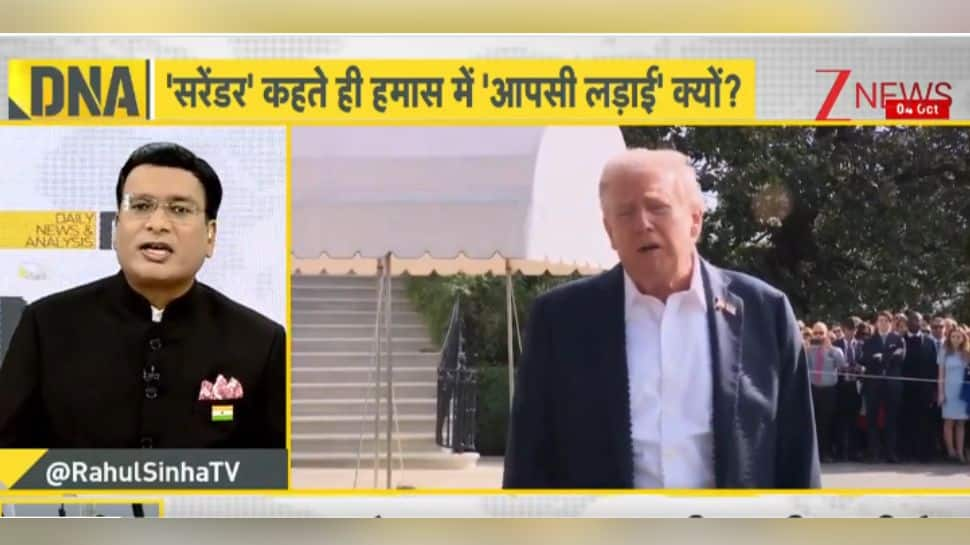Top Stories
Trump’s Gaza Ceasefire Proposal Deepens Hamas Divide

The ceasefire proposal presented by US President Donald Trump for the Gaza conflict has led to significant internal divisions within Hamas. The group has fractured into two distinct factions, with political leaders based in Qatar showing support for Trump’s plan, while military commanders operating in Gaza have outright rejected it. According to a report by The Washington Post, the demands outlined by Trump—including the surrender of weapons and the withdrawal of Hamas fighters—have exacerbated existing tensions within the organization, which has historically received backing from various Muslim nations.
Trump has set a deadline of Sunday for Hamas to release all hostages, issuing stern warnings of “hellish consequences” should they fail to comply. This ultimatum coincides with ongoing airstrikes from Israel, which have reportedly resulted in the deaths of at least 20 individuals in recent bombings. Israeli officials have reiterated their commitment to continuing military operations until Hamas completely surrenders.
Internal Discontent and Historical Context
In a recent statement, Hamas rejected the notion of international oversight over Gaza, demanding a full Israeli withdrawal in a single phase. Notably, the group’s silence regarding the weapons surrender clause indicates the persistent divide between its political and military wings. This schism has historically undermined previous ceasefire agreements in 2008, 2012, and 2014, all of which collapsed due to renewed hostilities.
The current situation also highlights perceived double standards by international powers. While China has welcomed Trump’s Gaza ceasefire initiative, it has obstructed United Nations proposals aimed at sanctioning Pakistan-backed terrorist figures, such as Sajid Mir and the Terrorist Resistance Front (TRF). Furthermore, Trump authorized USD 230 million in aid to Lebanon, with USD 190 million allocated specifically for its military. This move has raised questions about whether the US is attempting to undermine Hezbollah, Iran’s most influential proxy, especially as the group has reduced its attacks on Israel in 2025.
International Ramifications and Regional Security
Analysts suggest that Trump’s strategy may reflect a broader attempt to employ a “divide and weaken” approach akin to what has been observed with Hamas. In response to these developments, India has criticized the inconsistencies in global responses to terrorism, particularly pointing to the ongoing threats posed by Pakistan-sponsored terrorism. Indian officials have reiterated their commitment to Operation Sindoor, stating that their efforts to combat terrorism will persist until the threat is neutralized.
The situation remains fluid as the dynamics within Hamas evolve alongside international reactions. The unfolding events not only impact Gaza but also resonate across the broader Middle Eastern landscape, raising critical questions about the future of peace and stability in the region.
-

 World5 months ago
World5 months agoSBI Announces QIP Floor Price at ₹811.05 Per Share
-

 Lifestyle5 months ago
Lifestyle5 months agoCept Unveils ₹3.1 Crore Urban Mobility Plan for Sustainable Growth
-

 Science4 months ago
Science4 months agoNew Blood Group Discovered in South Indian Woman at Rotary Centre
-

 World5 months ago
World5 months agoTorrential Rains Cause Flash Flooding in New York and New Jersey
-

 Top Stories5 months ago
Top Stories5 months agoKonkani Cultural Organisation to Host Pearl Jubilee in Abu Dhabi
-

 Sports4 months ago
Sports4 months agoBroad Advocates for Bowling Change Ahead of Final Test Against India
-

 Science5 months ago
Science5 months agoNothing Headphone 1 Review: A Bold Contender in Audio Design
-

 Top Stories5 months ago
Top Stories5 months agoAir India Crash Investigation Highlights Boeing Fuel Switch Concerns
-

 Business5 months ago
Business5 months agoIndian Stock Market Rebounds: Sensex and Nifty Rise After Four-Day Decline
-

 Sports4 months ago
Sports4 months agoCristian Totti Retires at 19: Pressure of Fame Takes Toll
-

 Politics5 months ago
Politics5 months agoAbandoned Doberman Finds New Home After Journey to Prague
-

 Top Stories5 months ago
Top Stories5 months agoPatna Bank Manager Abhishek Varun Found Dead in Well









